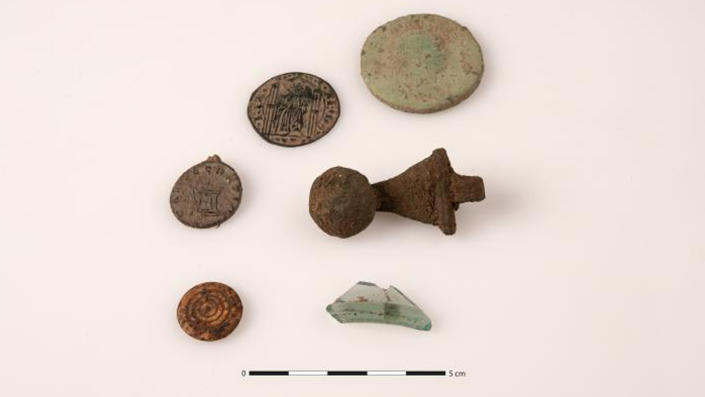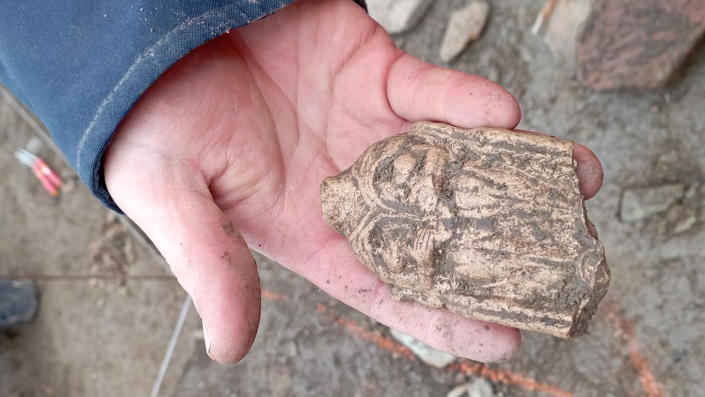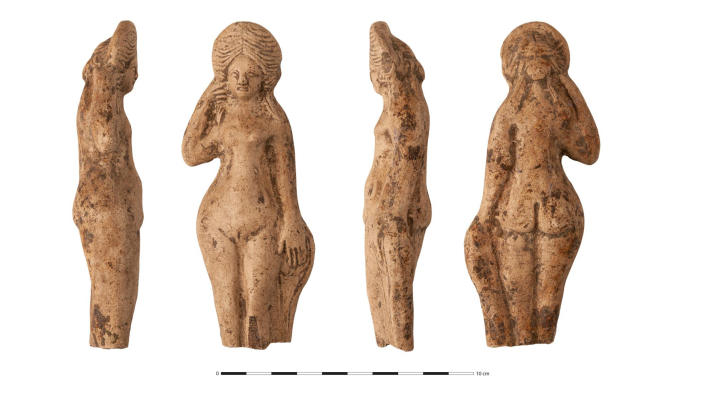A treasure trove of 1,800-year-old ancient artifacts, including statuettes of Venus, a potter’s kiln, coins and clothes pins, have been found in a rare setting by archaeologists in France. In a Roman quarry that was later turned into a garbage dump in the area now known as Rennes.
Rennes, which is in the northwest of France, was established in the first century A.D. as the Roman settlement. A large amount of stone was required to build homes, walls, and public structures. Archaeologists from the French National Institute for Preventative Archaeological Research (Inrap) reported earlier this month that they had discovered a quarry that was probably important in the construction of Roman Rennes while conducting excavations in advance of a development project.
Researchers discovered a Roman-era rock excavation site that was more than 6.5 feet (2 meters) deep and was built out in phases. From this site, the Romans removed schist slabs, a metamorphic rock that was frequently employed in ancient building construction.



Jason Farr, a Roman archaeologist at Saint Mary’s University in Halifax, Canada, and an expert on ancient quarries, told Live Science, “The Romans are famous for developing quarries all over the Mediterranean. Most quarries in the Roman world would have been local affairs, focused on supplying building stone in bulk to nearby towns and farms. The concrete walls favored by the Romans required a great deal of stone.”
In the second century A.D., after all of the stone had been extracted, the quarry was shut down and turned into a huge garbage dump. “Because they were so close to towns, quarries were frequently reused, open pit quarries made for ideal trash dumps.” Farr said.
The terracotta statuettes, including two that show Venus in various situations, as well as countless pot and plate fragments, a few coins, some clothing pins, and other artifacts were found by Inrap archaeologists. Venus, who was revered as the goddess of love throughout the Roman era, was closely linked to the emperors and frequently represented Roman power. In Roman understanding, the goddess was repeatedly represented in civil architecture and on coins. The first temples to Venus were built in Rome around 200 BC to ask for her help in battles.
A fragment of the mother goddess Venus genetrix, who is depicted with her chest covered in fabric, was discovered during the quarry excavation. Venus Anadyomene, who rose from the sea, is the second and more full example. She is naked and is wringing the water from her hair with her right hand (cover photo).



The Rennes quarry had been completely filled in by the Medieval period (14th to 15th centuries). Archaeologists from Inrap discovered the ruins of wooden houses, stoves, and wells, indicating that the area was once used for craft production. A 17th-century underground plumbing line was also discovered, which went beneath a historically recognized girls’ boarding school and delivered water to Rennes.
The Rennes quarry is significant for what it can reveal to archaeologists about stone extraction techniques, chiseling tools, organization, and management of the area during the expansion of a Roman town, in addition to its collection of ancient artifacts.
“Relatively few Roman-period quarries for ‘mundane’ building stone have been excavated,” Farr added, noting how important the construction sector was to the local economy. The recently discovered Rennes quarry is even more intriguing as it contains real mining knowledge about ancient life and its repurposing as a dump, he said. “There is so much we can learn here.”
